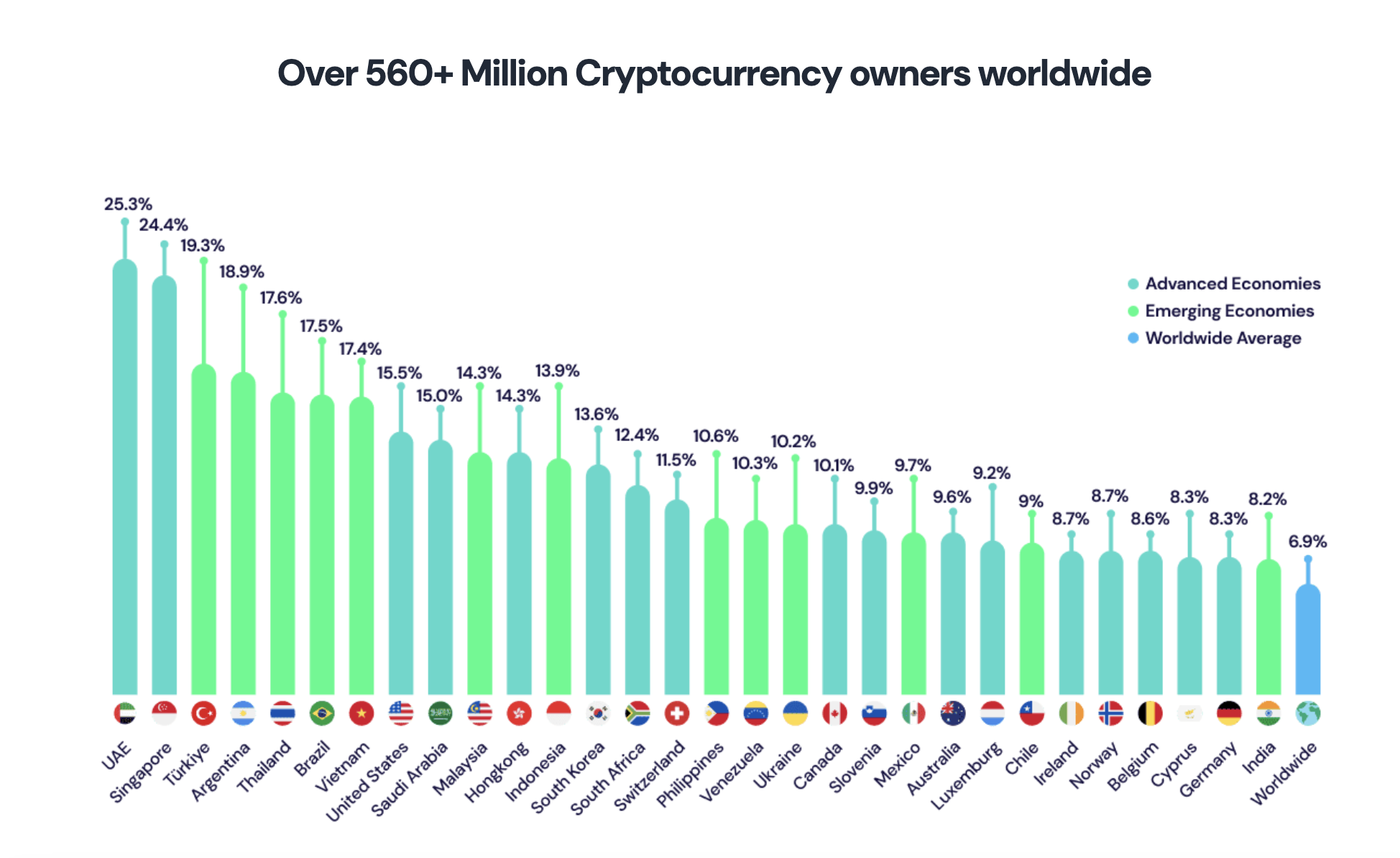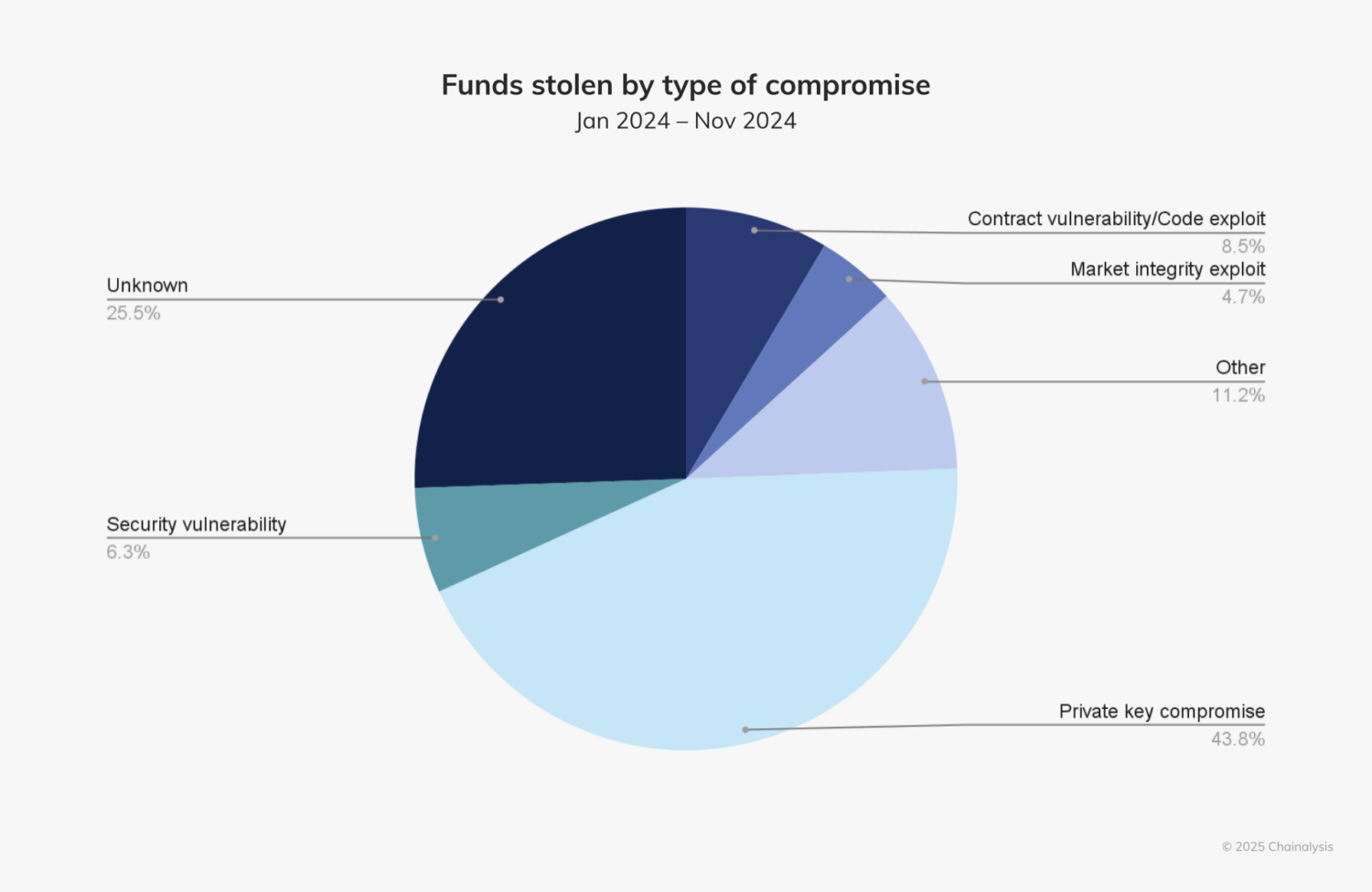Global adoption of digital assets is predicted to fuel a rise in cryptocurrency wallet usage in the coming years. In preparation for a surge in adoption, developers are focused on increasing security sophistication and expanding functionality.
BeInCrypto spoke with the Trust Wallet team to discuss the future of crypto wallets, their utility, and the barriers that still need to be overcome to catapult wallets into mainstream markets.
Crypto Wallet Adoption Expected to Grow Significantly
In recent years, the crypto industry has grown remarkably, reflected by an overall global increase in adoption. According to a 2024 report from Triple-A, today, 562 million people across the globe own some or various forms of digital currencies, representing a 6.8% increase from the previous year.

As cryptocurrency gains mainstream and institutional acceptance, the role of crypto wallets becomes increasingly crucial. These platforms provide secure management and storage of users’ digital assets, including private keys, while ensuring accessibility to their holdings.
Though crypto wallet use declined in 2022 following the crypto winter and the FTX collapse, researchers expect their market size to increase considerably in the coming years.
Reports estimate the global crypto wallet market size was around $3.22 billion in 2024. This is projected to reach $33.67 billion by 2033, with a compound annual growth rate of 29.81%. It views the increasing acceptance of cryptocurrencies as a legitimate asset class as the primary driver of market growth.
Institutional adoption of Bitcoin and Ethereum, including their availability as exchange-traded funds (ETFs) in the United States, particularly marked a turning point for cryptocurrencies previously excluded from traditional finance.
With 2025 now in full force, wallet developers are focusing on refining software and security technology to keep up with an increasingly competitive market.
Integrating Crypto Wallets Into the Wider FinTech Market
Pierre Lavarague, Head of Business Development at Trust Wallet, is optimistic about the future of crypto wallets. In a conversation with BeInCrypto at NFT Paris, Lavarague said that success in this sector depends on its integration with broader, more traditional financial markets.
“I think one of the key successes in 3 to 5 years for wallets is if we manage to not be seen as a crypto wallet, but as a fintech for mass markets. This means to move outside of the niche market we have right now, to something more common in terms of habits and vision from all the different users we can have,” he said.
Making the transition seamless for users will ensure this can happen.
“So the idea is just to become the next FinTech, where the user will be able to interact with a lot of financial services all powered by blockchain, but without noticing it. I’m going to consider the job done when someone’s going to interact with Trust Wallet as they would with any other FinTech app,” Lavarague added.
But for that to happen, crypto wallets must address one of the most critical obstacles they face today – onboarding.
Meeting New Users in the Middle
Crypto wallets face an increasing need to accommodate users with varying levels of technical expertise to facilitate wider adoption.
“I think today one of the key challenges is how to onboard people in crypto, DeFi, or Web3 in general. It’s something very new from a habitual perspective. If you randomly take 100 people in the street and ask them to download the wallet and go on any DeFi protocol to interact with it, the drop rate is going to be close to 100 people,” Lavarague explained.
The user experience must be smooth and simple to ensure customers can easily navigate the wallet’s functionalities.
“We want to have a seamless onboarding process to remove most of the friction Web2 people can face when interacting with a wallet or Web3, just to give them an experience as close to the Web2 experience they can have,” he told BeInCrypto.
Emerging technologies can also help with this process.
The Role of AI in Simplifying the Onboarding Process
As Web3 builders continue to incorporate artificial intelligence (AI) capabilities into their projects, Lavarague believes the same can be done to improve user interaction with crypto wallets.
“I think AI, fed with the right data from the user, can bring a lot of help to design this custom experience. We could imagine an AI designing the full user journey based on his on-chain action, age, preference, all the data the user is willing to give us during the onboarding. AI could use that to tailor fully personalized experience inside the app,” he said.
This technology can also be similarly used to facilitate the customer experience for those users who are already well-versed in crypto and use their wallets for several different purposes.
“From my perspective, where the AI will bring most of the value is to have a custom experience for every user inside the wallet. So, you can imagine one single app, but millions of different user experiences depending on your preference, on-chain activity, and your center of interest. Are you more into NFTs? Are you more into swapping tokens? Are you more into yield farming or stablecoin lending? You can imagine the AI reshaping the parts of your own user experience based on how you’re using the product to better fit your needs,” Lavarague explained.
AI can also safeguard against increasingly sophisticated attacks against user security.
Safeguarding Against Sophisticated Cyber Attacks
Security remains a key concern for crypto wallets. A 2025 Chainalysis report revealed that compromised private keys were the primary cause of cryptocurrency theft in 2024, representing the largest share of stolen funds.
These thefts totaled $2.2 billion, an increase from the $1.7 billion in 2023. The number of hacking incidents also surged.

Eve Lam, Trust Wallet’s chief information security officer, said wallet developers are enhancing their technologies in several key ways to address the increasing sophistication of cyberattacks.
“One significant improvement is the integration of AI-driven vulnerability detection in development pipelines. By incorporating AI into the development process, vulnerabilities in smart contracts and blockchain systems can be identified and mitigated more effectively. Automated security checks and predictive tools allow developers to catch potential issues before they are deployed. So, AI is becoming a fundamental component of secure blockchain development,” Lam told BeInCrypto.
At the same time, the increasing sophistication of blockchain-related crimes requires real-time monitoring and effective fund recovery solutions. AI can help with this.
“Crypto wallets are focusing on enhanced on-chain threat monitoring and recovery mechanisms. AI-powered tools enable proactive risk detection. Also, improved tracking on the blockchain increases the chances of recovering lost funds. Advanced forensic tools that trace the movement of stolen assets through obfuscation techniques provide hope for victims and raise the bar for attackers, making it more difficult for them to succeed,” Lam explained.
Deploying these mechanisms in 2025 will be crucial to curb the rise of cyber attacks targeting user assets on crypto wallets.

